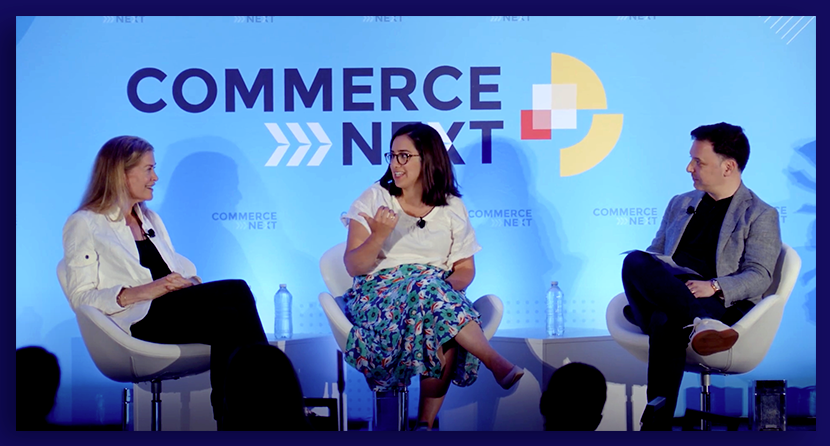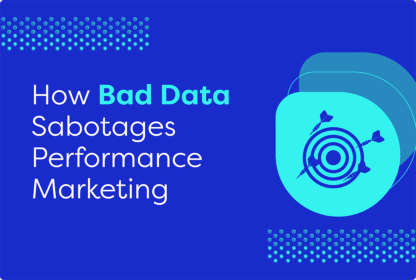What a year! Changes in consumer behavior, increased regulation around data privacy, and a dynamic economic climate have put a lot of pressure on marketers to show results—the bar is high. As a result, many leading marketers are turning to hybrid channels that allow them to use digital data, technology, and strategies to engage consumers in the moments that matter across online and offline touchpoints. This evolution has powered the explosive growth of entirely new channels that leverage familiar formats, such as connected TV (CTV), digital out-of-home (DOOH), and Programmatic Direct Mail (PDM), which major brands use to power profitable growth throughout the entire customer lifecycle and have become a central part of their marketing mix.
On June 21st, PebblePost CEO Jacob Ross moderated a discussion on this topic between two brands using Programmatic Direct Mail (PDM), Lulu and Georgia VP of Growth Julia Metaxas and Tailored Brands CMO Carolyn Pollock, in the panel “Programmatic Direct Mail: A Performance-Driven Approach to Marketing to People at Home” at the CommerceNext retail and e-commerce conference. Here are some of the main highlights of their conversation, including best practices and practical advice for marketers looking for new channels like Programmatic Direct Mail (PDM) to tap into for growth opportunities.

- Everything moves at the speed of digital, so ensure your channels can keep up
Home design and furniture brand Lulu and Georgia has been around for ten years. It started to see its growth surge in 2019 when it started diversifying its marketing programs with channels like Programmatic Direct Mail (PDM) to be more agile and efficient. Metaxas, who has deep experience in traditional direct mail, said that, in comparison, PDM is fast, flexible, and complementary to her brand’s other direct mail efforts. Given her brand sells higher-ticket items, Metaxas said most people wouldn’t buy a $4,000 couch on their mobile but would make a purchase while at home, adding that PDM works well for considered purchases and is highly incremental.
For Tailored Brands, which owns brands like Men’s Wearhouse and Jos. A. Bank, digital is close to a point of purchase, and PDM is similar in that way but with a richer presentation, Pollock noted.
“As we look for where we can get more efficiencies and continue to optimize, I just really believe in the power of the mix,” she said. “These traditional channels still play a role in our mix…I think where we got excited about what PebblePost brought was that we were then able to take this rigor and discipline that we put into targeting and measurement with digital that we’ve now brought into a direct mail channel but with greater speed as well.”
- Incrementality is better than ROAS for measuring Programmatic Direct Mail…and increasingly, everything
Both brands said their marketing investments are not driven only by return on ad spend (ROAS) but by incrementality. This is also true for measuring individual channels.
Metaxas’ team meets weekly and moves money around depending on how well certain channels work. Channels like Programmatic Direct Mail also allow for clear creative testing because you know exactly what a user responded to.
Pollock said Tailored Brands has moved to media mix modeling and prioritizes measurability in evaluating where to make investments.
“When we look at where does the next dollar go or where does the first dollar get cut, the measure is always going to be what’s the incremental contribution, to the point where we can actually start thinking about marketing as a profit center,” she said.
Regarding testing and learning in emerging channels, Lulu and Georgia starts small and adds more budget when they see a channel is working up to the point of diminishing returns. Tailored Brands no longer tests by channel and instead runs match market tests on putting money in certain channels simultaneously to see the impact on the overall marketing mix. Ross added that PDM lends itself well to continuous, incremental measurement.
“Programmatic Direct Mail is amazing because it’s all household-based targeting which supports really clean holdout groups, suppresses existing customers in a very accurate way, and then enables always-on incrementality studies that allow brands to continuously measure,” he said.
- The immediate term is about optimizing what’s working
In looking toward the back half of the year, both brands said they’re not necessarily planning to test into new marketing channels but instead will keep optimizing what’s working, including channels like PDM.
Tailored Brands remains focused on maintaining strong customer relationships and acquiring more customers. Pollock said they’re looking at the mix of channels across existing and new customers and ensuring they’re personalizing messaging. Lulu and Georgia is pressing pause on any new channels, Metaxas said.
“We’re really just focusing on optimizing our existing channel mix, on efficiency, cutting where we need to cut, and scaling where we can scale,” she said.
If you like what you’re reading, view the conversation here.
If your brand wants to explore emerging channels like Programmatic Direct Mail to reach consumers at home with greater speed and flexibility, check out PebblePost’s newly enhanced platform. It provides everything you need to execute Programmatic Direct Mail programs that drive profitable growth. Learn more here.



